Recent Posts
What to do if you experience electrical fires in your home
12/11/2024 (Permalink)
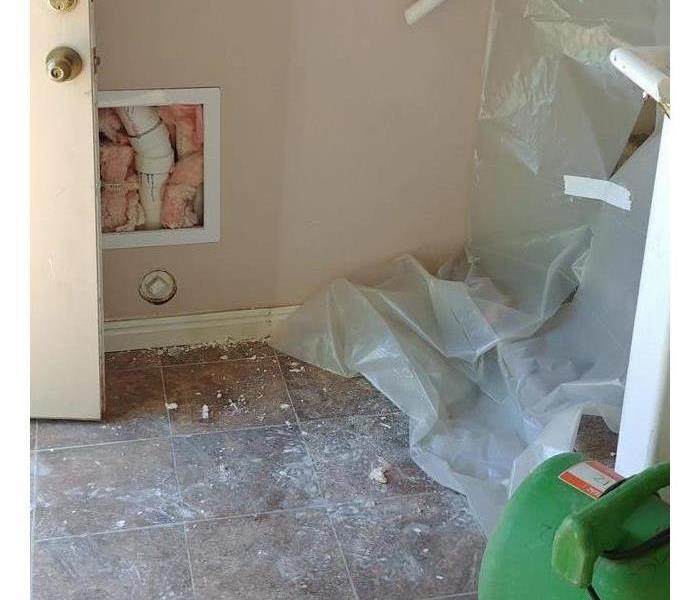 Protect your home from future electrical fires by staying informed, acting fast, and calling in the experts when needed.
Protect your home from future electrical fires by staying informed, acting fast, and calling in the experts when needed.
Electrical fires can be extremely dangerous and cause significant damage to homes. In fact, electrical failures or malfunctions are the second leading cause of home fires in the United States, accounting for 13% of all home structure fires, according to the National Fire Protection Association (NFPA). Knowing what to do in the event of an electrical fire can make all the difference in protecting your property and loved ones. Here’s what you need to know if you experience an electrical fire in your home.
Recognize the Signs of an Electrical Fire
Electrical fires often begin subtly, with warning signs that might go unnoticed. Watch for these common indicators of electrical issues:
- Frequent circuit breaker trips
- Burning smell without a clear source
- Discolored or charred outlets
- Sparking from outlets or appliances
Recognizing these signs early can help prevent a minor issue from turning into a full-blown electrical fire.
What to Do When an Electrical Fire Starts
If an electrical fire occurs in your home, it’s critical to act fast but safely. Here’s what to do:
- Cut off the Power: If it's safe to do so, immediately turn off the power at the circuit breaker. This cuts off the electrical current feeding the fire, reducing the risk of it spreading.
- Use a Fire Extinguisher: Use a Class C fire extinguisher designed for electrical fires. Never use water to put out an electrical fire, as water conducts electricity and can make the situation more dangerous.
- Evacuate and Call 911: If the fire is spreading quickly or you're unable to extinguish it, evacuate immediately. Call 911 and let the professionals handle the fire.
- Do Not Re-Enter: Once you’ve evacuated, don’t go back inside until emergency responders have confirmed it’s safe. Re-entering too soon can be dangerous due to lingering electrical hazards.
Preventing Future Electrical Fires
Prevention is key when it comes to electrical fires. Follow these tips to reduce the risk:
- Regularly inspect your electrical system with the help of a licensed electrician.
- Avoid overloading outlets and extension cords.
- Replace outdated wiring and faulty appliances.
- Use surge protectors to safeguard devices during electrical surges.
By staying proactive and aware, you can reduce the likelihood of experiencing an electrical fire.
In the unfortunate event that your home experiences fire damage, SERVPRO of St. George is here to help. Our team of fire restoration experts has the experience and tools necessary to restore your home to pre-fire conditions. We’re available 24/7 to assist with any fire-related emergency.
Protect your home from future electrical fires by staying informed, acting fast, and calling in the experts when needed.
Mold in Your Basement: Causes and Remediation Strategies
11/13/2024 (Permalink)
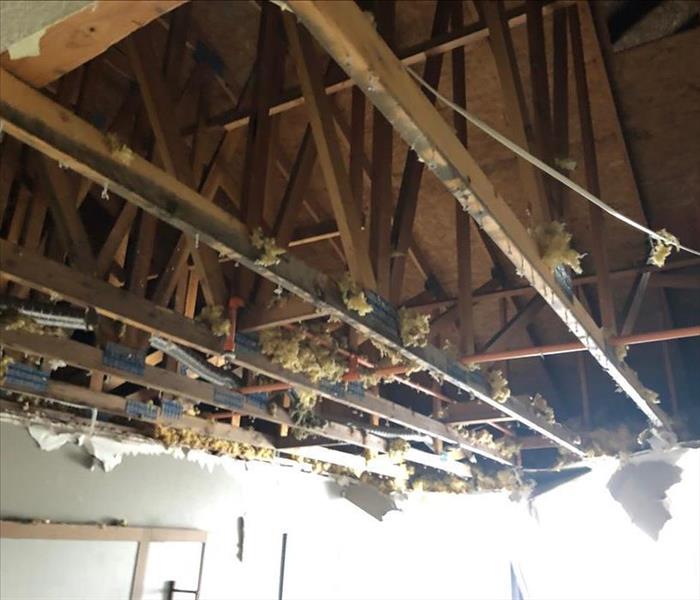 By understanding the causes of mold in your basement and applying the right remediation strategies, you can protect your property from damage.
By understanding the causes of mold in your basement and applying the right remediation strategies, you can protect your property from damage.
Mold growth in basements is a common problem that can lead to significant property damage if left untreated. Understanding the causes of basement mold and knowing effective remediation strategies are essential for homeowners looking to protect their homes. In this blog, we’ll provide expert insights into the most common causes of basement mold and offer proven strategies for removing and preventing it.
Causes of Mold in Your Basement
Basements are particularly vulnerable to mold because of their damp, cool environment. Here are the key causes of mold growth in basements:
- Moisture Intrusion: Water leaks from cracked foundations, poor drainage, or even plumbing issues can introduce moisture into your basement. Mold thrives in moist environments, making it essential to address any water intrusion immediately.
- High Humidity Levels: Mold can begin to grow in areas where humidity levels are above 60%. Basements often have poor ventilation, which can lead to a buildup of humidity and condensation, creating an ideal environment for mold to flourish.
- Inadequate Ventilation: A lack of proper airflow prevents moisture from escaping the basement. This trapped moisture leads to damp surfaces that mold spores can easily attach to and grow on.
- Organic Materials: Mold needs organic material to grow, and basements often contain items like wood, drywall, and cardboard that provide a perfect food source for mold spores.
Mold Remediation Strategies
If mold is found in your basement, taking immediate action is crucial. Here are effective remediation strategies to address and prevent mold:
- Fix Water Leaks: The first step in mold remediation is to stop the source of moisture. Inspect your basement for any cracks, leaks, or water infiltration points and repair them immediately.
- Control Humidity: Use a dehumidifier to maintain a humidity level below 50% in your basement. This will make the environment less hospitable for mold growth.
- Improve Ventilation: Increase airflow in your basement by installing vents or fans. Proper ventilation helps reduce moisture buildup, limiting the potential for mold growth.
- Remove and Replace Affected Materials: If mold has grown on porous materials like drywall or insulation, it’s often best to remove and replace them. Cleaning mold from non-porous surfaces with a mold-specific cleaner is also effective.
- Professional Mold Remediation: For extensive mold infestations, it's recommended to consult professionals. According to the Environmental Protection Agency (EPA), mold problems larger than 10 square feet should be handled by professionals EPA Mold Remediation Guidelines.
Preventing Future Mold Growth
To prevent mold from returning, conduct regular basement inspections, ensure proper drainage, and maintain controlled humidity levels. Installing a sump pump and addressing any foundation cracks will further help keep your basement mold-free.
By understanding the causes of mold in your basement and applying the right remediation strategies, you can protect your property from the damaging effects of mold. If you need expert help, SERVPRO® of St. George is here to provide professional mold remediation services to keep your home safe and dry.
Essential Tips for Protecting Yourself During Water Damage Cleanup
10/17/2024 (Permalink)
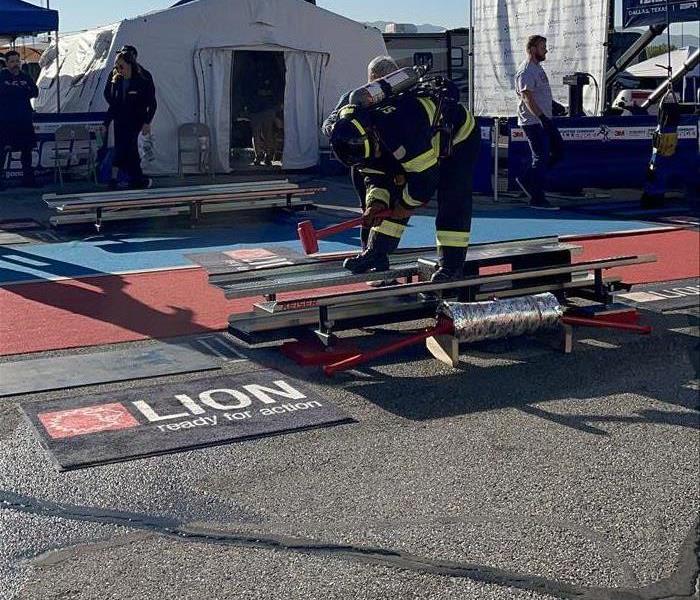 This blog will provide essential tips on protecting yourself during water damage cleanup.
This blog will provide essential tips on protecting yourself during water damage cleanup.
When dealing with water damage in St. George, UT, ensuring your safety during the cleanup process is paramount. Water damage can occur from various sources, such as burst pipes, heavy rainfall, or appliance malfunctions. Regardless of the cause, the cleanup process requires careful attention and proper precautions. This blog will provide essential tips on protecting yourself during water damage cleanup, focusing on the importance of personal protective equipment (PPE) and safe practices.
Importance of Personal Protective Equipment (PPE)
One of the most critical aspects of water damage cleanup is the use of personal protective equipment (PPE). PPE helps shield you from potential hazards such as contaminated water, debris, and chemical exposure. According to a National Library of Medicine study, about 60 percent of workers use PPE during work. The main reasons for non-use are “discomfort, lack of knowledge on how to use it, and poor fit.”
Essential PPE for Water Damage Cleanup
To protect yourself during water damage cleanup, it's crucial to use the following PPE:
- Gloves: Heavy-duty, waterproof gloves are essential to protect your hands from contaminated water and sharp objects.
- Goggles: Safety goggles help prevent water and debris from coming into contact with your eyes.
- Respirators: A respirator with an appropriate filter can protect you from inhaling harmful particles, dust, or fumes.
- Waterproof Boots: Sturdy, waterproof boots provide foot protection from sharp debris and water exposure.
- Coveralls or Waterproof Clothing: Wearing full-body coveralls or waterproof clothing helps keep contaminated water off your skin.
Best Practices for Safe Cleanup
In addition to wearing the proper PPE, following safe cleanup practices is vital. Here are some essential tips:
- Assess the Situation: Before starting the cleanup, assess the area for potential hazards like electrical wires or structural damage. If you're unsure, it's best to consult a professional.
- Use Proper Tools: Utilize tools such as wet/dry vacuums and dehumidifiers to remove water efficiently. Avoid using electrical equipment in wet areas.
- Dispose of Contaminated Materials: Dispose of any items that have been contaminated by water, such as carpets or insulation. Proper disposal helps prevent further damage and contamination.
- Ventilate the Area: Ensure proper ventilation to reduce humidity levels and speed up the drying process. This helps prevent mold growth and further damage.
Conclusion
Water damage cleanup is a challenging task that requires proper precautions to ensure your safety. By using the right personal protective equipment and following safe practices, you can effectively protect yourself and prevent further damage to your property. Remember, when in doubt, it's always best to seek professional assistance. Stay safe and protect yourself during the cleanup process!
Safeguard Your Business: Tips for Preparing for Storm Season
9/11/2024 (Permalink)
 Here are some essential tips for business owners to ensure their enterprise is ready for any storm.
Here are some essential tips for business owners to ensure their enterprise is ready for any storm.
Storm season poses significant risks to businesses in St. George, UT, potentially disrupting operations and causing financial losses. According to the Federal Emergency Management Agency (FEMA), 40 percent of small businesses never reopen after a disaster. This alarming statistic highlights the importance of preparedness. Here are some essential tips for business owners to ensure their enterprise is ready for any storm.
Assess and Update Your Emergency Plan
Conduct a Risk Assessment
Evaluate your business's vulnerability to various types of storms, including hurricanes, tornadoes, and severe thunderstorms. Identify critical business functions and the resources needed to support them during a disruption.
Develop a Comprehensive Emergency Plan
Create a detailed emergency plan outlining procedures for before, during, and after a storm. Ensure that your plan includes:
- Evacuation routes and procedures: Clearly marked and communicated to all employees.
- Emergency contacts: A list of key personnel and emergency services.
- Communication strategy: How you will communicate with employees, customers, and stakeholders during a storm.
Regularly Update and Test the Plan
Conduct regular drills and update your emergency plan at least annually to reflect any changes in your business operations or structure.
Protect Your Physical Assets
Secure Your Building
- Inspect and maintain your property: Check for any structural weaknesses and repair them promptly.
- Install storm shutters: Protect windows and doors from high winds and debris.
- Reinforce the roof: Ensure it is securely fastened and capable of withstanding strong winds.
Safeguard Equipment and Data
- Elevate critical equipment: Place essential machinery and electronics on higher ground to avoid water damage.
- Back up data: Regularly back up all important business data and store copies off-site or in the cloud.
Financial Preparedness
Review Your Insurance Coverage
Ensure that your business insurance policy covers storm-related damages. Consider additional coverage options, such as business interruption insurance, to protect against lost revenue during recovery.
Create an Emergency Fund
Set aside funds specifically for storm-related expenses. This can help cover immediate costs such as repairs, temporary relocation, and employee assistance.
Employee Preparedness
Train Your Staff
Educate employees about your emergency plan and their specific roles during a storm. Provide training on safety procedures and first aid.
Encourage Personal Preparedness
Remind employees to prepare their own homes and families for storm season. This ensures they can focus on their work responsibilities knowing their loved ones are safe.
Conclusion
Preparation is key to minimizing the impact of storm season on your business. By implementing a comprehensive emergency plan, securing your physical assets, ensuring financial preparedness, and training your employees, you can protect your business from the devastating effects of storms. For expert assistance in storm preparedness and recovery, contact SERVPRO®. Stay safe and be ready to weather any storm.
Stay Warm Safely: The Dangers of Space Heaters and How to Use Them Properly
8/14/2024 (Permalink)
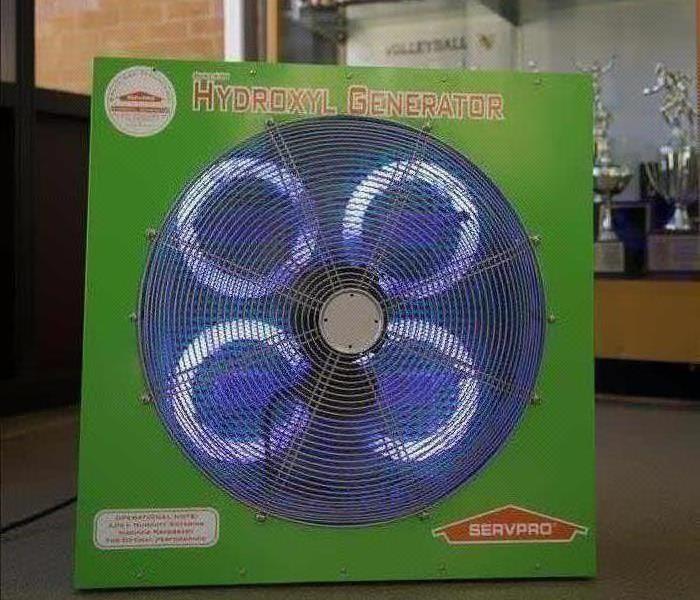 This blog highlights the dangers of space heaters and provides essential tips on how to use them safely.
This blog highlights the dangers of space heaters and provides essential tips on how to use them safely.
As the temperatures drop, many residents of St. George, UT, turn to space heaters to keep their homes warm and cozy. While space heaters can be an effective heating solution, they also pose significant fire hazards if not used properly. This blog highlights the dangers of space heaters and provides essential tips on how to use them safely.
Understanding the Dangers of Space Heaters
Fire Hazards
Space heaters are one of the leading causes of home fires during the colder months. They can easily ignite nearby flammable materials, such as curtains, bedding, and furniture if placed too close. Additionally, malfunctioning units or improper use can lead to electrical fires.
Burns and Injuries
Space heaters can become extremely hot to the touch, posing a burn risk to children and pets. Contact with the heating element or other hot surfaces can cause serious injuries.
Carbon Monoxide Poisoning
Fuel-burning space heaters, such as those that run on kerosene or propane, can produce carbon monoxide (CO), a colorless and odorless gas that is deadly in high concentrations. Proper ventilation is crucial when using these types of heaters to prevent CO buildup.
Safe Usage Tips for Space Heaters
Choose the Right Heater
Select a space heater that is certified by a recognized testing laboratory, such as UL (Underwriters Laboratories). Ensure it has safety features like automatic shut-off if it tips over or overheats.
Proper Placement
Place space heaters on a flat, stable surface and keep them at least three feet away from flammable materials. Avoid using them in high-traffic areas where they can be easily knocked over.
Never Leave Unattended
Always turn off space heaters when leaving the room or going to bed. Never leave a space heater running unattended, as this significantly increases the risk of fire.
Use the Right Power Source
Plug space heaters directly into a wall outlet. Avoid using extension cords or power strips, as they can overheat and cause a fire. Ensure the outlet can handle the electrical load of the heater.
Maintain Ventilation for Fuel-Burning Heaters
If using a fuel-burning space heater, make sure the area is well-ventilated to prevent carbon monoxide buildup. Install a carbon monoxide detector in the room and test it regularly.
Regular Maintenance and Inspections
Inspect your space heater regularly for any signs of damage or wear. Replace any faulty units immediately. Follow the manufacturer’s instructions for cleaning and maintenance to ensure the heater operates safely.
SERVPRO®: Your Partner in Fire Safety
SERVPRO is committed to helping you maintain a safe and warm home. Our team provides expert fire damage restoration services and valuable advice on fire prevention. Contact us for more information on how we can assist in making your home safer this winter.
Space heaters can be a convenient way to add warmth to your home, but they come with significant risks. By following these safety tips, you can enjoy the benefits of a space heater while minimizing the dangers
The Role of HVAC Systems in Mold Growth
7/10/2024 (Permalink)
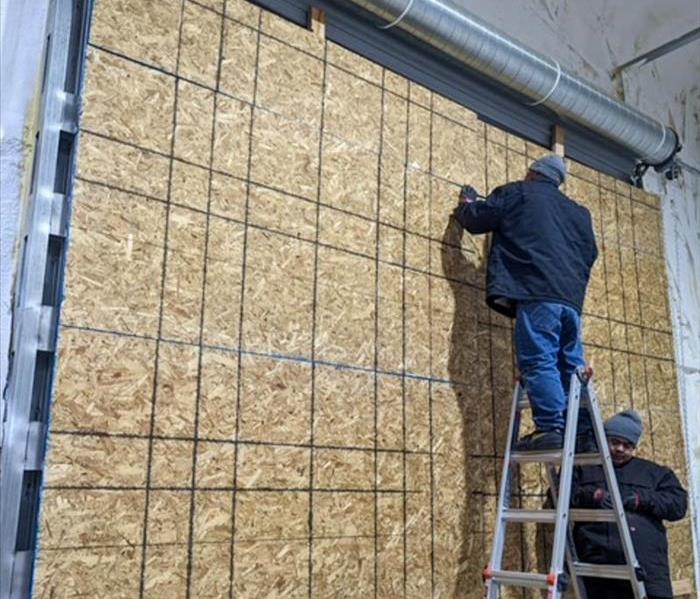 Understanding how HVAC systems can impact mold growth is essential for preventing mold issues in your home.
Understanding how HVAC systems can impact mold growth is essential for preventing mold issues in your home.
Your HVAC (Heating, Ventilation, and Air Conditioning) system plays a crucial role in maintaining a comfortable and healthy indoor environment. However, if not properly maintained and cared for, HVAC systems can also contribute to mold growth. Understanding how HVAC systems can impact mold growth is essential for preventing mold issues in your home.
How Mold Spreads Through HVAC Systems
Mold spores, which are tiny microscopic particles, exist naturally in the air both indoors and outdoors. When conditions are favorable, such as when moisture and organic material are present, mold spores can grow into visible mold colonies. HVAC systems can facilitate the spread of mold by circulating spores throughout your home.
Humid environments, condensation, and moisture buildup within HVAC components provide a conducive environment for mold growth. Dust, dirt, and organic matter that accumulate within the system can also serve as a food source for mold.
Preventive Measures for HVAC Systems
Taking preventive measures to maintain your HVAC system and minimize the risk of mold growth is crucial. Here are some key steps to follow:
Regular Maintenance and Inspection
Schedule regular maintenance and inspection of your HVAC system to identify and address any issues promptly. This includes cleaning or replacing air filters, checking for leaks, and ensuring proper drainage. Regular maintenance helps maintain proper airflow, reduces the accumulation of dust and debris, and minimizes the conditions that promote mold growth.
Control Indoor Humidity
Controlling indoor humidity is vital for preventing mold growth. While HVAC systems can help regulate humidity to some extent, they may not be sufficient in humid climates or areas prone to high humidity. Consider using standalone dehumidifiers in particularly humid spaces or integrating a whole-house dehumidifier into your HVAC system to maintain optimal humidity levels.
Ensure Proper Ventilation
Proper ventilation is essential for preventing moisture buildup and mold growth. Ensure that your HVAC system is correctly sized for your home and that it provides adequate airflow throughout all areas. Proper ventilation helps eliminate stagnant air and, in conjunction with other preventive measures, can significantly reduce the potential for mold growth.
Keep Components Clean and Dry
Regularly clean your HVAC system's coils, drip pans, and drainage lines to prevent the accumulation of moisture and organic matter. It's important to remove any debris or standing water that may provide an environment conducive to mold growth. Additionally, ensure that the area around the HVAC system is clean and free from any potential sources of moisture.
Professional Assistance
If you suspect or have identified mold growth within your HVAC system, it's crucial to seek professional assistance. Mold remediation experts, such as those at SERVPRO®, can evaluate the extent of the mold problem, identify the source, and provide appropriate remediation strategies.
Addressing mold issues in HVAC systems requires specialized knowledge and expertise to mitigate the risk of further contamination. Trained professionals can clean and remediate the affected components, ensure proper disinfection, and provide recommendations for ongoing maintenance to prevent future mold growth.
Taking proper care of your HVAC system and understanding its role in mold prevention is essential for maintaining a comfortable and healthy indoor environment. By implementing these preventive measures and seeking professional assistance when necessary, you can reduce the risk of mold growth and enjoy the benefits of a well-maintained HVAC system.
For more information or assistance with HVAC-related mold issues, contact SERVPRO. Our team of experts is equipped to handle mold remediation and provide solutions tailored to your specific needs, ensuring a safe and mold-free living space.
Weathering the Storm: Roof Leaks and Water Damage Inspection and Repairs
6/12/2024 (Permalink)
Your roof serves as the first line of defense against the elements, shielding your home from rain, wind, and snow. However, over time, wear and tear, extreme weather, and other factors can compromise its integrity, leading to roof leaks and water damage. In this blog, we'll explore the importance of inspecting for roof leaks, identifying signs of water damage, and undertaking necessary repairs to protect your home from further harm.
Understanding Roof Leaks
Roof leaks can occur for various reasons, including damaged shingles, deteriorated flashing, clogged gutters, and poor installation. Identifying the source of a roof leak can be challenging, as water can travel along rafters and beams before manifesting as visible damage inside the home. Common signs of roof leaks include water stains on ceilings and walls, peeling paint, warped wood, and damp insulation.
Conducting a Roof Inspection
Regular roof inspections are essential for detecting potential issues and addressing them before they escalate into costly repairs. Schedule inspections at least twice a year, preferably in the spring and fall, and after severe weather events. During the inspection, look for missing or damaged shingles, cracked flashing, deteriorated sealant around vents and chimneys, and signs of water infiltration in the attic.
Identifying Water Damage
Water damage resulting from roof leaks can manifest in various ways, depending on the severity and duration of the leak. Common signs of water damage include water stains on ceilings and walls, sagging or discolored drywall, bubbling paint or wallpaper, musty odors, and mold or mildew growth. It's essential to address water damage promptly to prevent further deterioration and mold growth.
Repairing Roof Leaks
Once roof leaks and water damage have been identified, prompt repairs are necessary to prevent further damage and protect your home's structural integrity. Depending on the extent of the damage, repairs may involve replacing missing or damaged shingles, resealing flashing and vents, repairing damaged roofing materials, and addressing underlying structural issues. It's advisable to enlist the services of a professional roofing contractor for complex repairs to ensure quality workmanship and long-lasting results.
Preventative Maintenance
In addition to addressing existing roof leaks and water damage, implementing preventative maintenance measures can help extend the lifespan of your roof and minimize the risk of future issues. Keep gutters and downspouts clear of debris to ensure proper drainage, trim overhanging branches to prevent damage from falling limbs, and inspect your roof regularly for signs of wear and tear. Investing in routine maintenance can save you time and money in the long run by preventing costly repairs and prolonging the life of your roof.
Roof leaks and water damage pose significant risks to the structural integrity and safety of your home. By conducting regular roof inspections, identifying signs of water damage, and promptly addressing roof leaks through repairs and preventative maintenance, you can protect your home from further harm and ensure its longevity. Don't wait until water damage becomes a costly problem – call SERVPRO of St. George to take proactive steps to safeguard your roof and preserve the integrity of your home.
Storm Preparedness 101: Essential Emergency Supplies to Have
5/9/2024 (Permalink)
When the skies darken and the winds begin to howl, being prepared for a storm can make all the difference in ensuring the safety and well-being of your family. Storms can bring a range of challenges, from power outages to flooding, and having the right emergency supplies on hand is crucial. In this blog, we'll guide you through the essential emergency supplies to have in your storm preparedness kit.
Water and Water Purification
Start with the most fundamental necessity – water. Ensure you have at least one gallon of water per person per day for at least three days. Additionally, include water purification tablets or a portable water filter to make local water sources safe to drink.
Non-Perishable Food and First Aid
Pack a supply of non-perishable food items that require little to no preparation. Canned goods, granola bars, dried fruits, nuts, and ready-to-eat meals are excellent choices. Check expiration dates regularly and rotate items to keep your supply fresh.
A well-stocked first aid kit is indispensable during emergencies. Include bandages, antiseptic wipes, pain relievers, adhesive tape, scissors, tweezers, and any prescription medications your family members may need.
Flashlights and Batteries and Weather Radios
Ensure you have reliable flashlights with extra batteries. LED flashlights are energy-efficient and provide long-lasting illumination. Consider a solar-powered or hand-crank flashlight for sustainable power.
A battery-powered or hand-crank weather radio keeps you informed about storm updates, advisories, and emergency information. Some models also have built-in phone chargers.
Emergency Blankets and Personal Hygiene
Maintain warmth with emergency blankets or sleeping bags. These compact and lightweight items provide essential insulation, especially during power outages when heating may be compromised.
Pack personal hygiene items such as toothbrushes, toothpaste, soap, hand sanitizer, and menstrual hygiene products. Consider including wet wipes for sanitation.
Multi-Tool and Basic Tools
A multi-tool or a set of basic tools can be invaluable for minor repairs or adjustments. Include items like a wrench, pliers, and a screwdriver in your emergency kit. In the event of power outages affecting electronic payment systems, having some cash on hand is essential. Include small denominations for flexibility.
Keep a waterproof and fireproof container with essential documents, including identification, insurance policies, medical records, and contact information for family members and emergency services.
Personal Items
A whistle can serve as an effective signaling device during emergencies. Include one in each family member's emergency kit. In the era of global health concerns, having face masks in your emergency kit is crucial. Pack a lightweight tent or tarp, along with sleeping bags or blankets, to provide shelter and warmth if you need to evacuate or find yourself stranded. Include portable chargers for your electronic devices. Solar-powered chargers are particularly useful for recharging devices during extended power outages. Customize your emergency kit to include items specific to your family's needs, such as baby supplies, pet food, and comfort items for children.
Remember to periodically review and update your emergency supplies to ensure they remain in good condition and meet the evolving needs of your family. By having a well-prepared storm kit, you empower yourself and your loved ones to face the challenges of severe weather with resilience and readiness.
Warming Up Safely: Navigating the Dangers of Space Heaters in Homes and Businesses
4/9/2024 (Permalink)
Space heaters are a popular choice for providing warmth in specific areas during colder months, offering convenience and efficiency. However, if used improperly, these handy devices can pose serious safety risks. In this blog, we'll explore the potential dangers of space heaters and provide essential tips on using them safely in both homes and businesses.
Understanding the Dangers
Fire Hazard
- One of the primary dangers associated with space heaters is the risk of fire. The intense heat they generate, especially when in close proximity to flammable materials, can ignite nearby objects.
Carbon Monoxide Emission
- Some space heaters that burn fuel can produce carbon monoxide, a colorless and odorless gas that can be lethal in high concentrations. Improper ventilation or a malfunctioning heater can lead to carbon monoxide buildup.
Tripping Hazards
- Space heater cords can pose tripping hazards if not placed or secured properly. This can lead to injuries and, in some cases, cause the heater to tip over.
Using Space Heaters Safely
Choose the Right Heater
- Select a space heater that meets safety standards and has built-in safety features such as tip-over protection and overheat shut-off.
Plug Directly into Outlets
- Avoid using extension cords with space heaters. Plug them directly into wall outlets to minimize the risk of overheating.
Ventilate the Area
- If you are using a fuel-burning space heater, ensure proper ventilation to prevent the buildup of carbon monoxide. Never use these heaters in enclosed spaces.
Use for Supplemental Heating
- Space heaters are intended for supplemental heating rather than serving as the primary heat source. Use them to warm specific areas as needed.
Install Carbon Monoxide Detectors:
- If you have a fuel-burning space heater, install carbon monoxide detectors in your home or business. Regularly check and replace batteries as needed.
Space heaters can be valuable tools for providing warmth, but their benefits should never compromise safety. By understanding and respecting the potential dangers of these devices and following recommended safety practices, you can create a cozy and secure environment in your home or business. Warm up safely, and let the comforting heat of your space heater enhance your surroundings without unnecessary risks.
Dry Air, Happy Home: Dehumidifiers and Mold Prevention Explained
3/12/2024 (Permalink)
Mold prevention is a critical aspect of maintaining a resilient and aesthetically pleasing home. One powerful tool in the mold prevention toolkit is the dehumidifier. In this blog, we'll explore the role of dehumidifiers in keeping your home mold-free.
Understanding the Basics
Dehumidifiers are appliances designed to extract excess moisture from the air. By pulling in humid air, condensing the moisture, and expelling dry air, dehumidifiers create an environment less conducive to mold growth.
The magic number for humidity levels in your home is typically below 60%. Dehumidifiers help maintain this optimal range, preventing the conditions that encourage mold to take root.
Targeting Problem Areas
Use dehumidifiers strategically in areas prone to moisture buildup, such as basements, crawl spaces, and bathrooms. These targeted efforts help address localized humidity issues.
Dehumidifiers offer precise control over moisture levels. With adjustable settings, you can tailor the dehumidifier's operation to the specific needs of different areas in your home. Basements are notorious for excess humidity. Dehumidifiers combat dampness by efficiently extracting moisture, preventing the conditions that mold spores thrive on.
Preserving Indoor Air Quality
While the focus here is on mold prevention, it's worth noting that dehumidifiers indirectly contribute to improved indoor air quality. By reducing excess moisture, these appliances create a fresher, more comfortable living environment.
Condensation on windows, walls, or pipes can create localized humid conditions. Dehumidifiers play a crucial role in combating condensation, preventing mold-friendly environments from forming.
Protecting Valuables
Mold can damage items stored in damp areas. Dehumidifiers safeguard your belongings by maintaining an environment inhospitable to mold growth, preserving the condition of furniture, clothing, and other possessions.
Modern dehumidifiers often come with energy-efficient features. Look for Energy Star-rated models to ensure that your mold prevention efforts are environmentally friendly and cost-effective.
Reducing Musty Odors
Musty odors are often a sign of excess moisture and mold. Dehumidifiers help eliminate these odors by keeping humidity levels in check, contributing to a more pleasant living environment.
Dehumidifiers contribute to overall home comfort. By reducing excess moisture, these appliances create a more comfortable atmosphere, making your living spaces more enjoyable.
Combating Mold Growth in Crawl Spaces
Crawl spaces are notorious breeding grounds for mold. Dehumidifiers are effective in combating mold growth in these confined areas, preventing potential structural and aesthetic damage. Excess moisture can lead to rust and corrosion on metal surfaces. Dehumidifiers help prevent these issues, extending the lifespan of metal components in your home.
Dehumidifiers are powerful allies in the fight against mold. By efficiently controlling moisture levels, these appliances create a mold-resistant oasis within your home. Embrace the benefits of dry air, preserve the condition of your belongings, and enjoy the peace of mind that comes with a well-maintained, mold-free living space. As you navigate the world of dehumidifiers, remember that the key lies in thoughtful placement and regular use to keep excess humidity at bay.
 Protect your home from future electrical fires by staying informed, acting fast, and calling in the experts when needed.
Protect your home from future electrical fires by staying informed, acting fast, and calling in the experts when needed.






 24/7 Emergency Service
24/7 Emergency Service



